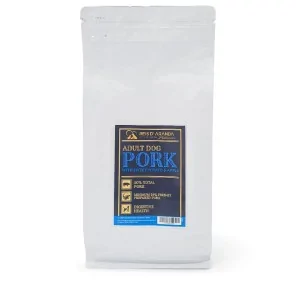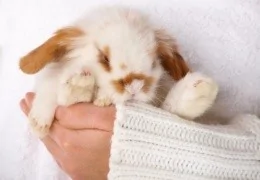The Tornjak originated from genetically homogeneous, almost extinct, indigenous shepherd dogs. These dogs have...
THE POODLE TOY
THE HISTORY OF THE TOY POODLE
The poodle is a direct descendant of the "barbet", an extinct breed of African origin that came to the Iberian Peninsula and crossed with Portuguese water dogs. Years later, these two breeds were eventually separated due to the efforts of breeders who sought to develop a dog intended exclusively for retrieving waterfowl.
Thanks to their sociable, extremely loyal and positive nature, poodles were no longer hunting dogs but became domestic animals and, as early as 15th century France, would be considered the national dog breed of France. From then on, breeders strove to achieve a solid coloured coat in this breed, avoiding spots and other undesirable patterns.
During the time of the French Revolution, the Poodle was one of the breeds favoured by high society along with the Pug, the Papillon, the large breed dogs (especially tracking dogs) and the Bichon Frisé. During such events, most of these dogs ended up on the streets and it was their versatility and character that turned them into circus dogs and prevented their extinction.
Such was the fame of these animals that as early as 1922 the Poodle Club was founded in Paris. A few years later, in 1936, the FCI established the official breed standard, but it was not until many years later that this recognition came for the toy poodle. It was not until 1984 that the toy poodle was recognised. Some of the names of the poodle in other countries are the poodle in the USA or the pudel in Germany.
In the year 2023, the Spanish Poodle Club was founded in Spain.
WHAT IS THE TOY POODLE LIKE?
The FCI describes the Toy Poodle as a small, solidly built and proportional dog. Above 24 cm (with a tolerance of minus 1 cm) up to 28 cm (the ideal type is the size of 25 cm) and up to 24 cm (with a tolerance of minus 1 cm); its adult weight ranges from 2 kg to 4 kg. The Toy Poodle has, on the whole, the appearance of the Dwarf Poodle, and has the same general proportions which meet all the requirements of the standard. Any trait of "dwarfism" is excluded. Only the occipital crest may be less marked.
The head is well proportioned with a slightly rounded skull and a moderately marked stop. The eyes are dark, almond-shaped with a lively expression. The ears are long, falling close to the cheeks and covered with long curly hair.
FCI ALLOWED COLOURS: Black, white, brown, grey and fawn (apricot and red).
COLOURS NOT ALLOWED BY THE FCI (2023): brindle, phantom and harlequin.
PROHIBITED COLOURS: REW and merle.
In temperament, the Toy Poodle is considered an alert, active and intelligent dog. They are very energetic and playful dogs, enjoying the company of their owners and interactive play. They are also known to be affectionate and loyal, forming strong bonds with their families.
HEREDITARY DISEASES OF THE TOY POODLE
-PRA [Progressive Retinal Atrophy]: There are two types of photoreceptor neurons in the retina: rods (located more on the periphery of the retina) and cones (located closer to the centre). These photoreceptors gradually deteriorate so that the retina is no longer able to capture light and, as it is unable to send information to the brain, the animal gradually stops seeing. In many cases, it is difficult to detect and the owner is not aware of it until the disease is very advanced.
-PLL [primary lens luxation]: It is a well recognised, painful and blinding inherited eye condition affecting many breeds of dog, particularly terrier and terrier-type breeds. In affected dogs the fibres that support the lens break down or disintegrate. As a result, the lens falls into the wrong position within the eye.
-DM [Degenerative Myelopathy]: Degenerative myelopathy or DM, also known as chronic degenerative radiculomyelopathy, is a disease that affects the dog's spinal cord and gradually leads to loss of mobility.
Over time, paralysis, urinary incontinence and loss of bowel control also occur. (Your dog will need to wear nappies).
Although the exact cause is unknown, it is believed to be caused by mutation of the SOD-1 gene. This gene encodes superoxide dismutase, a protein responsible for destroying free radicals in the body.
For the dog to suffer from degenerative myelopathy, the dog must have two copies of the mutated SOD-1 gene, although not all dogs with this mutation develop the disease. Dogs with a single mutation of this gene do not usually develop myelopathy, but are carriers and can transmit the disease to their puppies if they cross with a carrier dog. The disease is seen in dogs over 4 years of age and is most common in dogs over 8 years of age. Being degenerative, its symptoms become progressively more severe.

GROOMING THE TOY POODLE
The coat is one of the most recognisable characteristics of the Toy Poodle. It is dense, curly and woolly, forming compact, uniform curls that cover the entire body. This coat requires proper maintenance, with regular brushing to prevent the formation of knots and tangles - especially in the adolescent period when the puppy's coat transitions to adult. Many owners choose to keep it trimmed for ease of grooming and to maintain a neat and trim appearance. It is best to have Toy Poodles groomed every month.
Leave a comment
Log in to post comments
Comments
Bien escrito
By: Roberto D. On 05/11/2024Un artículo bien escrito, no me gustan mucho los caniches (me parecen perros muy insoportables) pero ha sido entretenido de leer
Mi poodle Óscar
By: Ashley On 05/11/2024Hola, me llamo Ashley y soy de Monterrey, tengo 12 años y mi poodle se llama Óscar, es muy bonito aunque le gusta mucho morderme los tobillos. Duerme conmigo y le encantan las tortillas.
A good breed
By: Brenda On 05/11/2024It's a great breed but you have to take good care of their hair, I'm a dog groomer and they always come in a mess.
La mejor raza del mundo
By: Laia On 05/11/2024Yo tengo tres caniches (uno mediano y dos enanos), el tema de la salud es muy importante porque al mediano (Bubbles) lo compré en una tienda y tuve que operarlo de las rodillas con 3 años; los enanos (Urko y Hinata) son hermanos y vienen de un buen criador que va a concursos, nunca han tenido ninguna enfermedad y van a cumplir 6 años.
Il mio Pickels
By: Chiara On 05/11/2024Adoro i barboncini
















